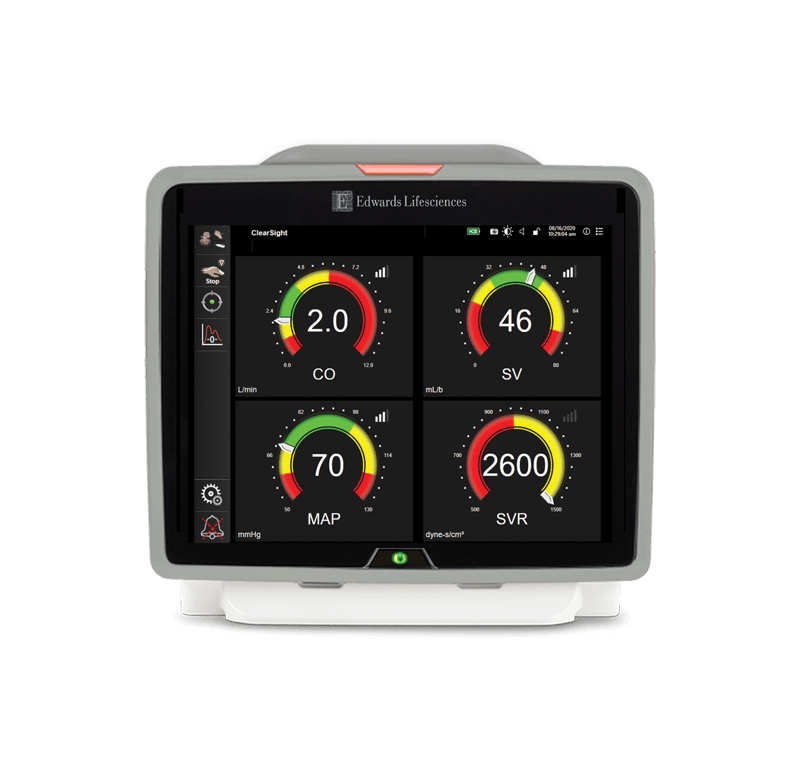
Unlocks Acumen HPI software
Acumen IQ cuff unlocks the first-of-its-kind technology designed to help predict future hypotensive events*.
*A hypotensive event is defined as MAP <65 mmHg for a duration of at least one minute.
Pour le canadien français, veuillez suivre ce lien.
Smart, noninvasive hemodynamic monitoring

This first-of-its-kind noninvasive solution unlocks Acumen Hypotension Prediction Index (HPI) software. It also provides continuous blood pressure measurements and advanced hemodynamic parameters, giving you insight to your patients' hemodynamic status.

Acumen IQ cuff unlocks the first-of-its-kind technology designed to help predict future hypotensive events*.
*A hypotensive event is defined as MAP <65 mmHg for a duration of at least one minute.
Accurately measures continuous blood pressure and hemodynamic parameters for patients who don't need, or can't have, an arterial line.1

An advanced hemodynamic monitoring solution that helps guide individualized treatment decisions.
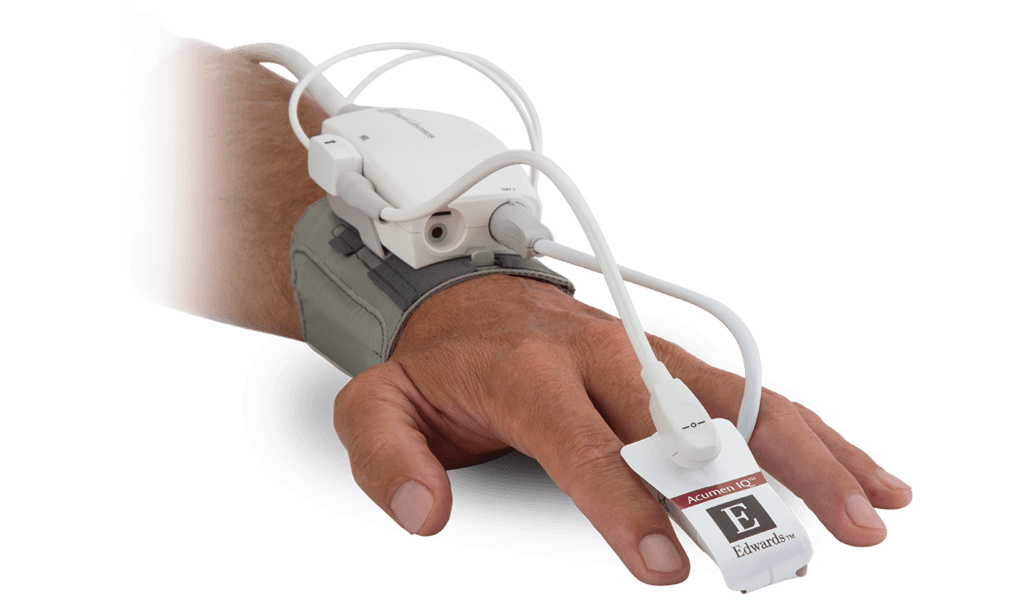
Acumen IQ cuff is available on the HemoSphere advanced monitoring platform. This noninvasive finger cuff unlocks Acumen HPI software and enables you to proactively optimize perfusion using continuous blood pressure and advanced hemodynamic parameters. The finger cuff provides automatically calculated, beat-to-beat hemodynamic information and offers you access to advanced hemodynamic parameters for patients who don’t need, or can’t have, an arterial line.
| Model numbers | Description | Unit of Measure |
| AIQCS | Acumen IQ cuff - small | EA |
| AIQCM | Acumen IQ cuff - medium | EA |
| AIQCL | Acumen IQ cuff - large | EA |
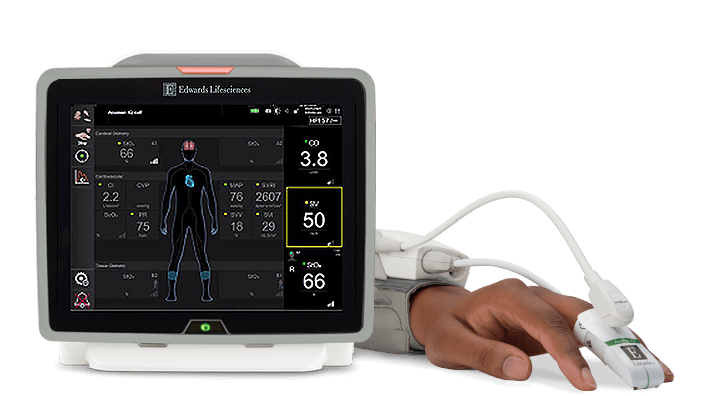
Maintaining necessary peripheral perfusion requires adequate peripheral blood pressure and adequate cardiac output. Acumen IQ cuff offers advanced hemodynamic parameters and continuous blood pressure to help you monitor perfusion, and access to the Acumen HPI software provides you insight to determine the root cause of instability.

Research findings have revealed strong associations between intraoperative hypotension (IOH) and elevated risk of both acute kidney injury (AKI) and myocardial injury after noncardiac surgery (MINS).2,3,4
Acumen HPI software is effective in detecting hemodynamic instability and substantially reducing the amount of intraoperative hypotension when used in surgical patients who require hemodynamic monitoring during noncardiac surgery.
88% of patients continuously monitored with an arterial line still experienced hypotension, defined as MAP <65 mmHg for 1 minute.5
Prolonged exposures below MAP thresholds of 65 mmHg are associated with increased risk of mortality, myocardial injury and AKI after noncardiac surgery.2,6
Acumen HPI software has demonstrated a reduction* in the duration of IOH by 57%.7
* Single arm, multicenter, prospective-to-historical control where patients received arterial line monitoring.

Dynamic and flow-based parameters are more informative than conventional parameters in determining fluid responsiveness and may help guide individualized volume administration in patients and avoid excessive or insufficient administration.8
Continuous access to pressure and flow parameters allows you to evaluate hemodynamic instability and guide appropriate treatment. When managing perfusion, stroke volume can be optimized using the patient’s own Frank-Starling curve.

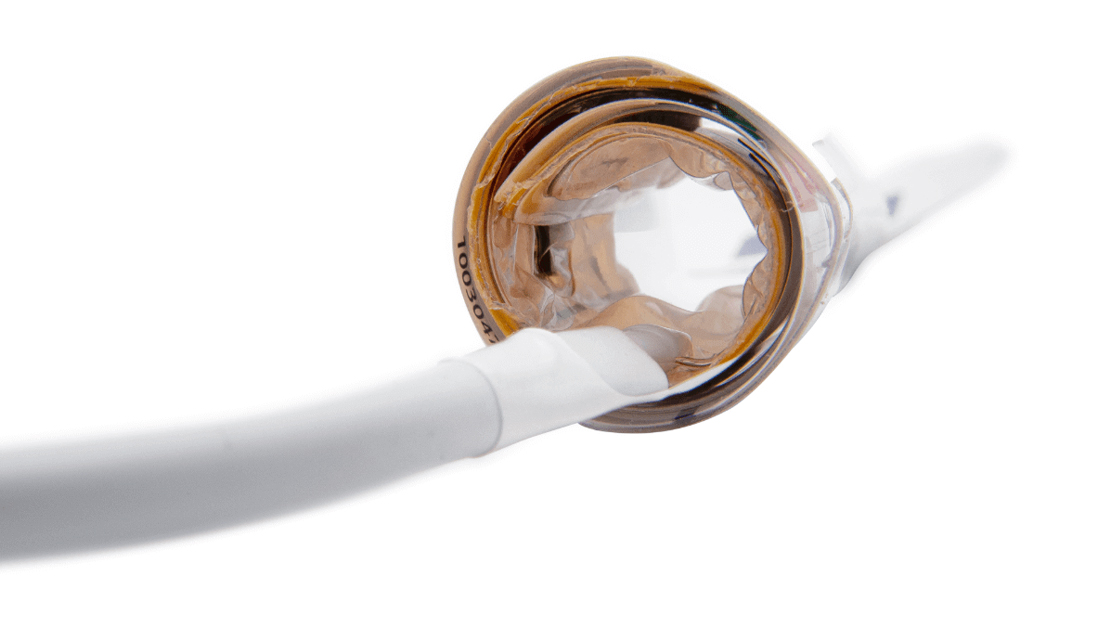
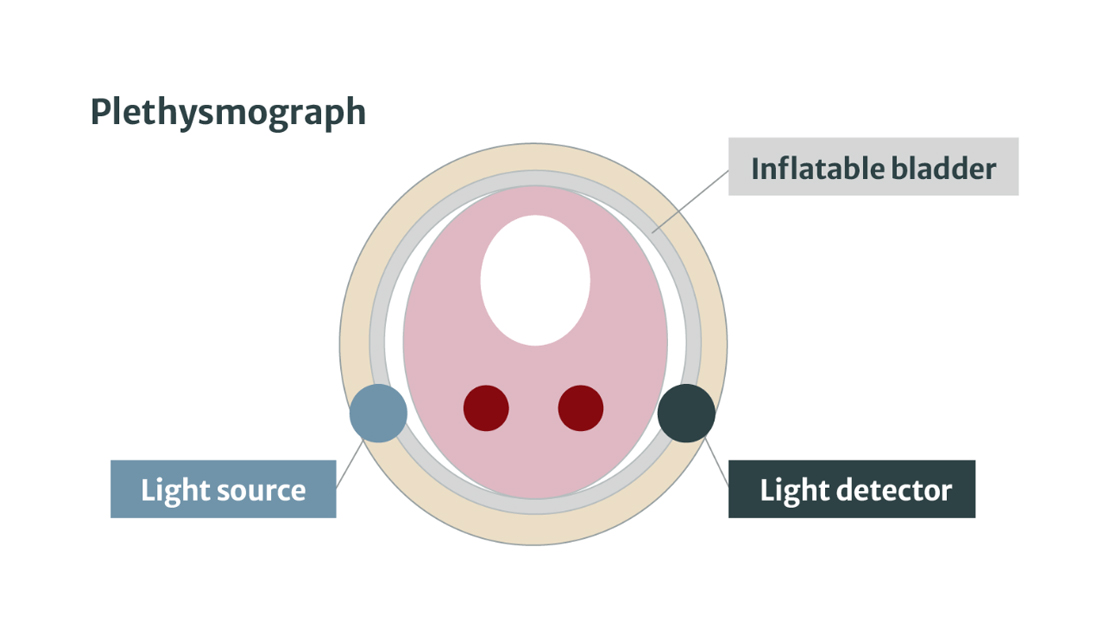



The Acumen IQ finger cuff design reduces variability in application. The easy-to-use self-coiling mechanism within the interior of the cuff wraps around the patient’s finger and offers consistent snugness and usability.
The essence of the volume clamp method involves clamping the artery to a constant volume by dynamically providing equal pressure on either side of the arterial wall. The volume is measured by a photo-plethysmograph built into the cuff. The counter pressure is applied by an inflatable bladder inside the cuff and is adjusted 1,000 times per second to keep the arterial volume constant. Continuous recording of the cuff pressure results in real-time finger pressure waveform.1
Physiocal is the real-time method for determining the proper arterial ‘unloaded’ volume, i.e., the volume without a pressure gradient across the arterial wall. Physiocal analyzes the curvature and sharpness of the plethysmogram during short episodes of constant pressure levels. It then automatically and periodically recalibrates the system allowing accurate tracking of physiologic changes, e.g., in vasomotor tone. Calibration interval starts at 10 beats, but it increases to every 70 beats as stability increases. Physiocal interval >30 beats is considered reliable.9
Clinical standard for noninvasive BP is brachial level. Acumen IQ cuff reconstructs the brachial arterial pressure waveform from the finger arterial pressure waveform. The reconstruction algorithm is based on a vast clinical database.10
Stroke volume is calculated by an algorithm based on an improved pulse contour method. Cardiac output results from stroke volume times heart rate, and is updated every beat.11
With a long-term commitment to improving the quality of care for surgical and critical care patients through education, Edwards clinical education meets you no matter where you are in the learning process — with a continuum of resources and tools that continuously support you as you solve the clinical challenges facing you today, and in the future.
The Acumen intelligent decision support suite offers predictive decision support for the management of hypotension.
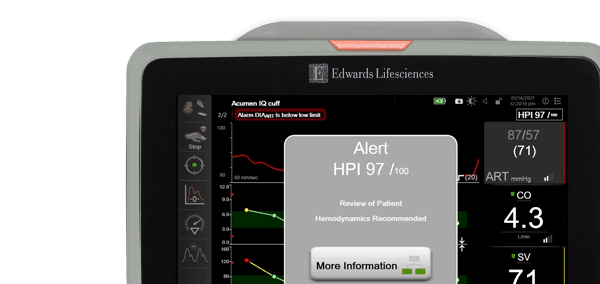
Acumen HPI software provides you with information regarding the likelihood of a patient trending towards a hypotensive event, and provides you with insights to understand the root cause and inform a potential course of action.
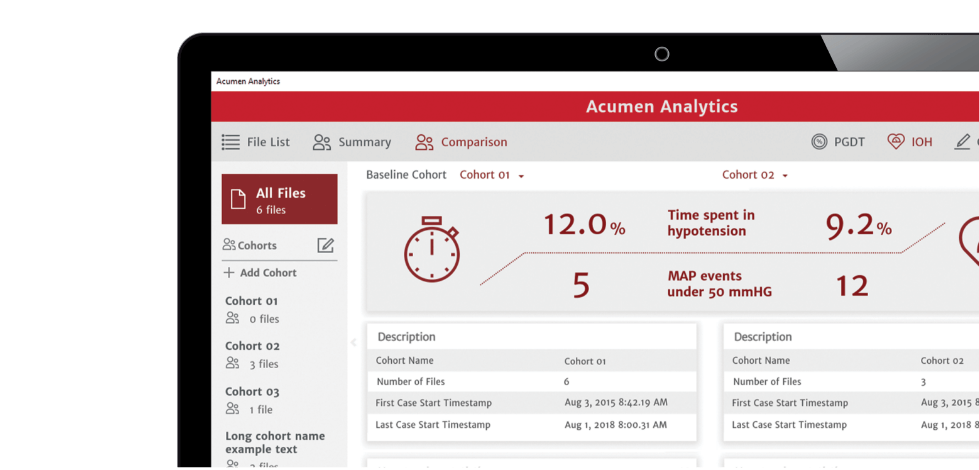
Acumen Analytics software enables you to retrospectively view and analyze hemodynamic parameters, including mean arterial pressure, providing you insights into the frequency, duration and prevalence of intraoperative hypotension in your practice.
We are committed to providing your institution, clinicians and staff with the highest levels of customer service and support to ensure seamless product implementation and ongoing use, including:
24/7 Technical support
For product information and orders
